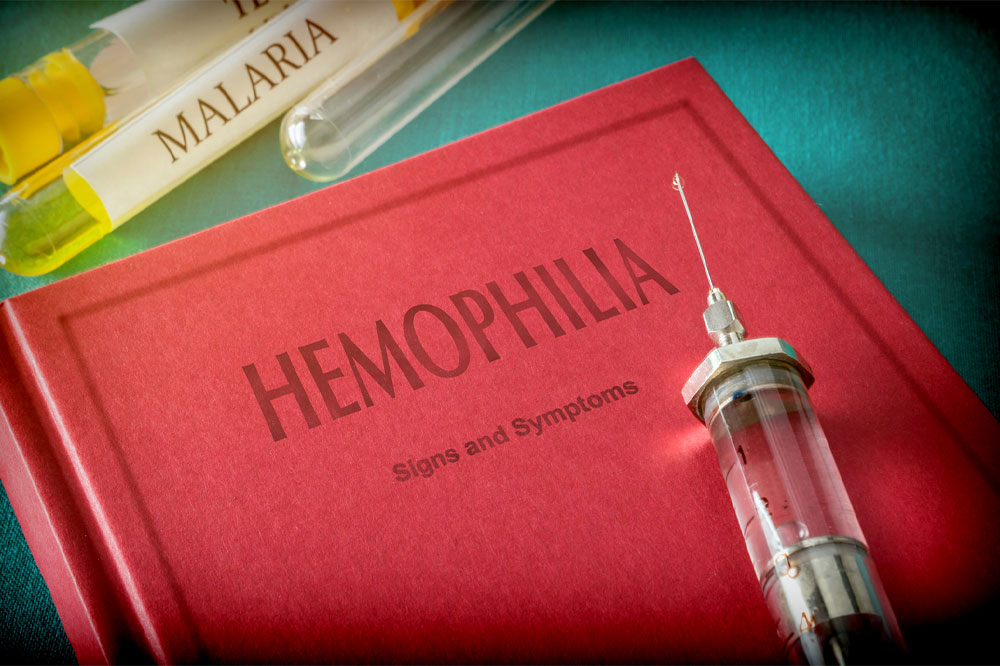
6 must-know signs of hemophilia
Hemophilia is a health condition in which a person’s blood does not clot correctly after a cut or injury, causing them to bleed excessively or spontaneously. It is a genetic illness that predominantly affects men. Typically, the hemophilic gene is passed down from mother to son. This disease has three different kinds: hemophilia A, B, and C. Here is a list of some hemophilia signs to keep an eye out for:
Hemarthrosis
It is a condition where blood leaks into the joints. Hemarthrosis usually occurs due to an accident but can also be a side effect of hemophilia. People with hemarthrosis experience a tingling, aching, or bubbling sensation at the affected joint. It could be accompanied by tenderness, swelling, and redness. This bleeding into the joints can occur as often as once or twice a week, but it varies from person to person.
When bleeding into a joint is detected, doctors replace the missing blood clotting factor as quickly as possible so the blood can clot correctly. A surgical treatment called synovectomy may reduce discomfort and restore some range of motion if hemarthrosis damages the joints. The lining of the joint (synovium) is removed during this procedure. While it will regrow after excision, the synovium will no longer be thickened with blood vessels as it once was. This operation will relieve discomfort and enhance the range of motion, but it will not restore the joint to its original condition. So preventing hemarthrosis is the best method to deal with it. In the case of hemophilia, this entails going for scheduled clotting-factor infusions.
Hematuria
Blood in the urine, known as hematuria, is another must-know sign of hemophilia. The color of the urine might turn red or brown. However, it can be hard to identify how much blood is being lost because even 1 ml of blood in 1 liter of urine can cause it to change color. As the urine is concentrated overnight, it is frequently deeper brown in the morning and redder during the day. Blood could enter any organ of the urinary system, including the kidneys, bladder, and prostate gland, causing the urine to appear red.
Hematoma
People with this condition can develop easy bruising. These bruises frequently have a “lump” below them known as a hematoma. Hematomas are actually blood clots that form outside of arteries. They usually develop due to damage to the walls of a blood vessel. Damaged blood vessels cause blood to flow out into the surrounding tissues. Those who experience such lumps should get checked for hemophilia.
Large muscular groups, such as the hip muscles, can bleed profusely, resulting in serious blood loss and the danger of unstable blood pressure. In most circumstances, this sort of bleeding does not require treatment, but if it is causing discomfort or restricting movement, treatment could help.
Intracranial hemorrhages
It is a condition where bleeding occurs inside the skull, usually in the brain. Intracranial hemorrhages can get triggered when a cerebral artery bursts, causing localized bleeding in the surrounding tissues. The brain cells die as a result of this, making it dangerous. Symptoms usually appear out of nowhere. Severe headaches, seizures with no prior history, weakness in an arm or leg, nausea or vomiting, trouble speaking, tingling or numbness, changes in eyesight, and other symptoms may progressively increase. The location, origin, and amount of a brain hemorrhage determine the treatment options. Surgery may be necessary to stop bleeding besides other treatments.
Nose bleeds
Those with this health condition may experience frequent nosebleeds without any reason. But thankfully, these can be treated at home. Once a nosebleed has begun, an easy and efficient approach to stop it is to squeeze the nose. It must be pressed correctly at the bridge, about where the spectacles may sit. Then, the patient’s head should be tilted down, and an ice pack should be applied to the nose. Besides applying pressure and a cold compress to the nose, patients may use treatment to stop the bleeding. Various options are available that prevent clot breakup. These may be used orally or administered into the blood during an episode.
Nose bleeds occur when the mucous membranes dry up and crack. So, it is advisable to keep the thermostat at a temperature that does not make the indoor air very dry and use a humidifier near the bed. Patients may also place a small bowl of water on the radiator.
Heavy menstrual bleeding
Women with this health condition may experience heavy monthly bleeding, which could be accompanied by exhaustion, paleness, loss of energy, and shortness of breath. However, it can be challenging to quantify menstrual bleeding because what is considered heavy by some could be normal for others. Doctors typically use terms like “abnormal uterine bleeding” or “menorrhagia” when bleeding is excessive.
Women can tell if their bleeding is heavier than usual if they find the tampon or pad soaking every two hours or need to change them in the middle of the night. Periods longer than eight days and unusually bigger clots are also signs of a bleeding disorder.
If a person notices any of these, it is always best to consult a doctor for a diagnosis.


